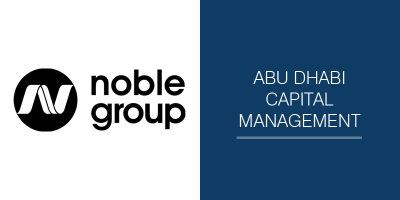Qatar knows that money talks. Doha’s money seems to enjoy saying “goodbye”.
In 2005, the Qatar Investment Authority (“QIA”) began its life as the country’s first formal sovereign wealth fund. The fund’s mandate was to invest the massive surpluses generated by the world’s biggest exporter of Liquified Natural Gas. The founding CEO was renowned statesman and Foreign Minister at the time, Sheikh Hamad Bin Jasem Al Thani (“HBJ”).
QIA’s early days were rather tenuous. A young organization with relatively inexperienced teams, it quickly made a number of mistakes that ultimately came to a head during the Global Financial Crisis (“GFC”) just 3 years later in 2008.
A Notorious Teenager
One problem area was QIA’s hedge fund investments which got the Qatari’s invested in the world’s biggest ever fraud. At the time QIA had the sense to know it lacked the experience to invest directly in hedge funds, and so it relied on the assistance of Fund of Fund managers to screen and pick hedge funds for them.
The Swiss-based Union Bancaire Privée (“UBP”) was one of QIA’s biggest advisors when it came to hedge funds, so much so that then Managing Director of UBP’s Middle East business, George Azar, opened UBP Qatar LLC in Doha and became its CEO. At the time QIA was (over)paying UBP tens of millions of dollars of dollars in fees. In return, UBP secured QIA exposure to some of the world’s most successful hedge funds, including one managed by a Bernard Madoff that turned out to be a USD 50 billion fraud.
Following the GFC, QIA’s GBP 322 million investment in Barclays PLC was subject to a Serious Fraud Office investigation in the UK. The same transaction had triggered an earlier investigation by the UK’s Financial Conduct Authority. In 2017 Barclay’s Ex-CEO John Varley and other senior executives were finally charged with fraud each case carrying a potential 10 year jail sentence.
More recently it appears QIA has embroiled itself in a Trump scandal, having “unwittingly” bailed out a New York skyscraper that was owned by his son-in-law Jared Kushner’s family. Qatar claims the decision was not politically motivated. To be fair it seems the transaction was done through an entity in which the QIA is one of many minority investors.
Change at the Top
All this in less than 15 years. It’s also worth highlighting that in this time QIA has plowed through 3 CEOs and is onto its 4th.
2005 to 2013 – HBJ
2013 to 2014 – Ahmed Al-Sayed
2014 to 2018 – Sheikh Abdulla Bin Mohammed Al Thani
2018 to present – Mansour Al Mahmoud
QIA hasn’t been entirely oblivious about its problems. In 2013, there were indications that QIA was seeking to reorganize itself. The FT pointed out the hiring of Stefan Frank from Deutsche Bank as head of strategy indication that a restructuring and streamlining of its operations was underway and that management consultants had been hired to assist.
It’s easy to see why QIA may have thought change was needed when one looks at its most public investments.
Public Investments
The table above shows the average holding period of QIA’s public market direct investments has been 8 years.
Just 7 out of 14 investments have been winners, a 50% hit ratio.
The average Gross Return of each of those investments has been a rather modest 12% (over 8 years), which equates to an unexciting 1.43% annualized return – barely beating Eurozone inflation over the same period.
Because Qatar’s own currency is pegged to the US Dollar, we should consider the effect of foreign currencies on investment performance. We’ve seen both the Euro and Sterling weaken -28% and -37% from interim peaks in 2008 and 2007 versus the dollar. These are likely to further depress QIA’s returns.
The average loss due to currency depreciation across QIA’s investments is -16%. The highlighted column in the table above adjusts the Gross Return for currency impact over the holding period in question, showing performance in USD.
QIA’s average drops from a positive 12% to a Net Return of -4%. This equates to a -0.5% annualized Net Return.
QIA’s hit-rate also falls, from 50% wins to just 36% of their investments producing positive returns.
There are some shortcomings to our analysis worth highlighting. The table doesn’t include every single investment, and some details are approximate due to lack of data. We haven’t considered the amount of capital invested in these transactions, all have been equally weighted. Additions and sales subsequent to the initial investment date have not been factored in, which may be significant. We also presume these investments were made on an un-hedged basis, which is likely considering the “strategic” and long-term nature of these stakes. Dividends too have not been accounted for in these calculations, which in some cases may have been material, particularly over long holding periods.
That said, even a 10% positive net return would only put them inline with Eurozone inflation over the period in question.
Conclusion
Whilst we can’t comment on how QIA has done with fund managers it has relationships with, we can show their bigger ticket direct investments in public companies have been disastrous.
In 2013 it was said that around 80% of QIA’s investments were in Europe. Earlier this year Reuters reported that QIA plans grow its US investments to USD 45 billion over the next two years. In a Bloomberg interview with Qatar’s finance minister in March 2017 he revealed that almost 60% of the earlier figure of USD 35 billion had already been deployed.
If QIA’s European public equity track record is anything to go by, and considering US equities today are trading at both generous valuations and all-time high profit margins, could QIA be positioning itself for even bigger losses down the road?
We’ve noticed that QIA hasn’t made that many large public investments in US corporates – opting instead for large Real Estate development projects – perhaps preferring the lower volatility of such investments.
That said, their recent interest in technology and a desire to open an office in Silicon Valley could sow the seeds of another underwhelming investments spree.
For now, Qatar’s public investing performance is squarely in the gutter.






Leave a Reply